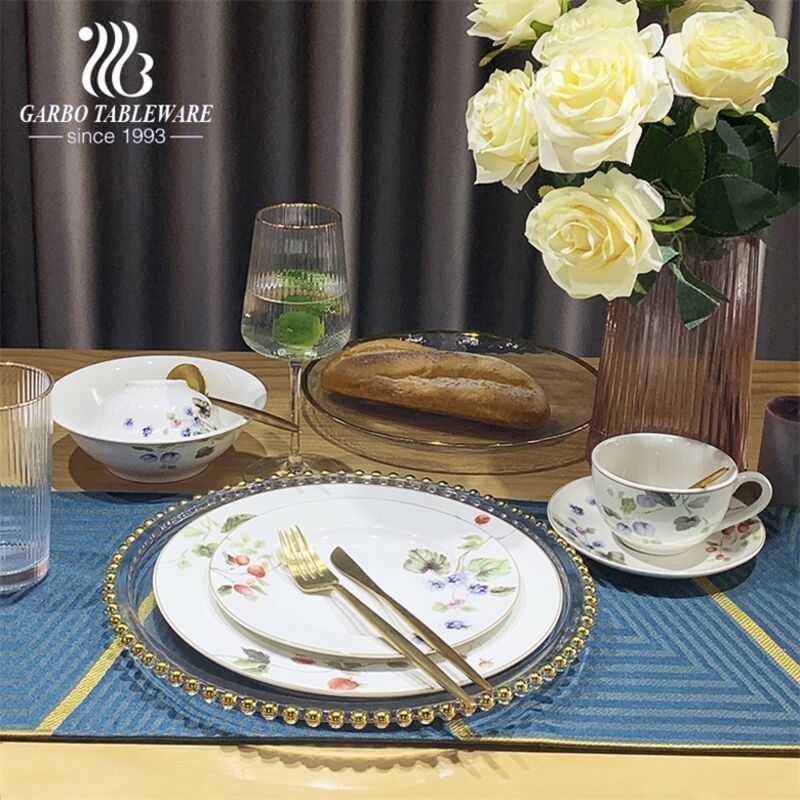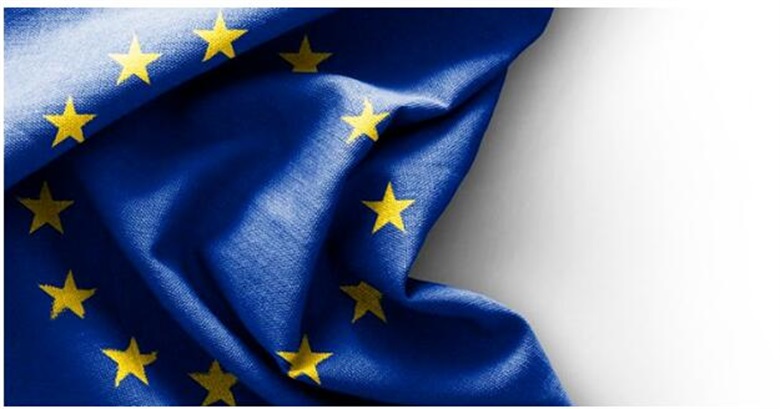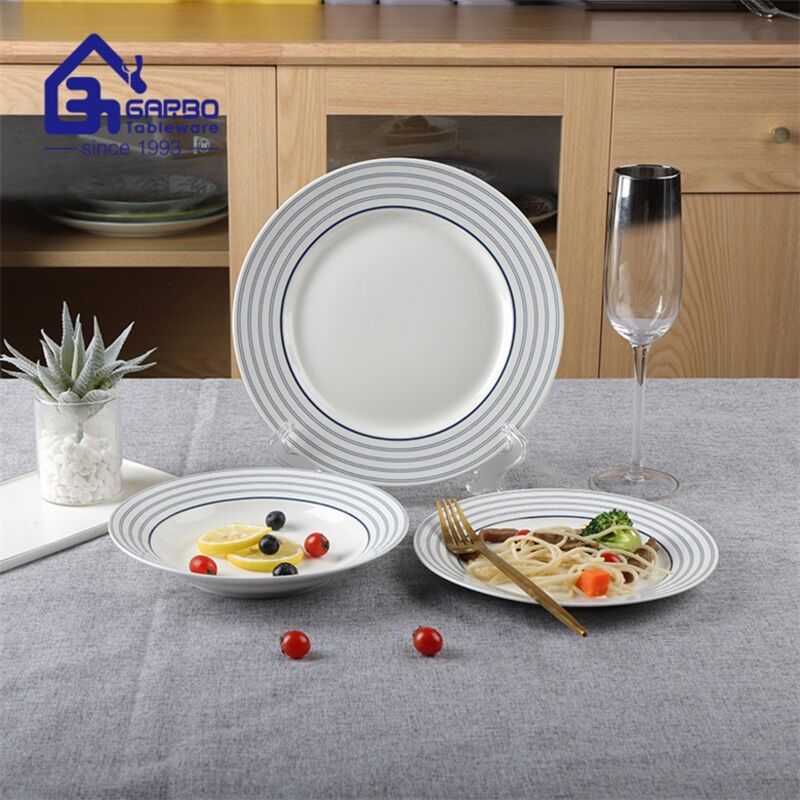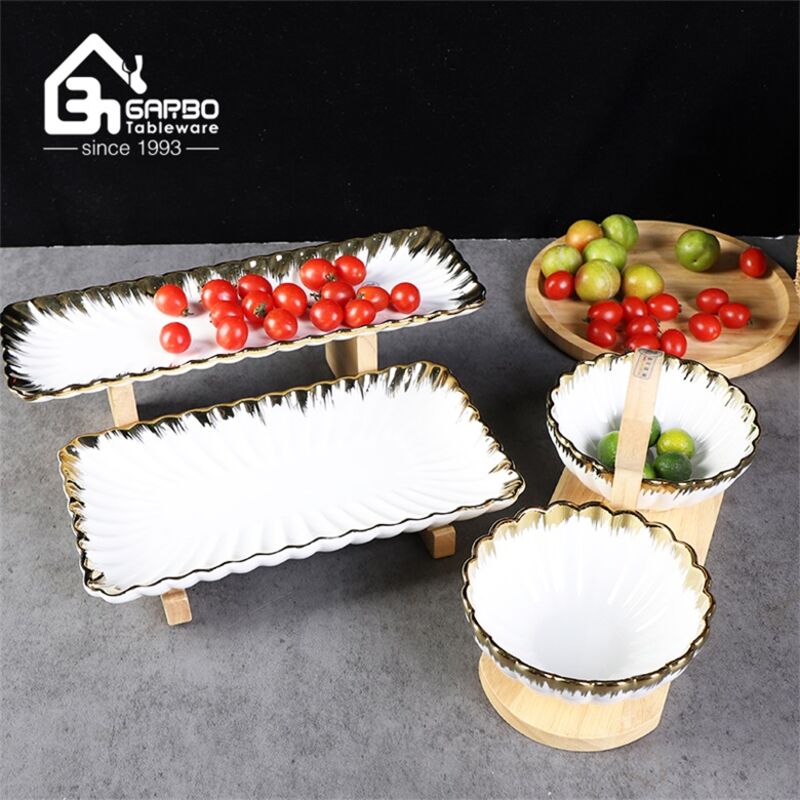Pulished on Apr. 13, 2024
China (porcelain) is one of the great inventions of the Chinese nation and has witnessed the development of ancient Chinese civilization. Ceramic tableware,
kitchenware, tea sets, etc. are closely related to people's daily lives. China's ceramic tableware has long ranked first in the world's output and export volume.
As an important export product, it has always played a role in strengthening friendly exchanges between China and foreign countries and promoting win-win international trade.

The quality of the ceramic tableware plays an important role in the international business trade.
Thus, do you know the quality standard for good-grade ceramic tableware for different markets?
After you find us as one of the potential suppliers list, You can check the ceramic tableware details as follows,
1)Ceramic tableware(stoneware, porcealine, bone china,new bone china).
2)Quantity. Get to know the MOQ for production and if any items are in a warehouse with a small MOQ.
3)Quality standards. You must know about your local market food grade standard for ceramic tableware.

The amount of lead and cadmium dissolution is an important safety and health indicator for ceramic tableware.
The requirements for food contact products such as ceramic tableware are mainly divided into three levels in the form of issuing regulatory instructions:
The first level is "general measures" applicable to all food contact products;

The second level is "specific measures" applicable to certain types of materials, such as the 84/500/EEC Directive on ceramic products that come into contact with food;
The third level is "individual measures" for specific substances, such as the 1st revision of EU Directive 2005/31/EC.
The U.S. federal government has implemented strict mandatory inspections of lead and cadmium limits for ceramic tableware and tea sets.
It should be noted that according to the Memorandum of Understanding on Ceramic Vessels for Preparing, Holding or Storing Food and Beverages Exported to the United States,
China's daily-use ceramics exported to the United States also implement a manufacturer certification system.

Key quality and safety indicators: Since the U.S. government adopts a unified regulatory system for imported, exported, and domestically sold products and cites the same conformity
assessment standards, entering the U.S. market must comply with the FDA standards "Cadmium Contamination of Imported and Domestic Ceramics" and "Cadmium Contamination
of Imported and Domestic Ceramics" "Lead Contamination", the detection method specifies the analytical method of the American Society for Testing and Materials (ASTM).

The management of ceramic tableware in Japan is the responsibility of the Ministry of Health, Labor, and Welfare and the food quarantine offices under its jurisdiction. Similar to the EU, requirements are divided into 3 categories:
The first is general regulations, which stipulate the content requirements of heavy metals, especially lead, in all food contact products.
Second, according to the material, safety guard requirements for more than a dozen types of polymers are stipulated for food contact products including ceramics.
The third is to stipulate quality requirements for special uses, such as setting strict standards for packaging pasteurized milk with materials that have specific uses.
During the manufacturing process of ceramic products, lead and cadmium may be present in glazes and decorative patterns. If used to hold food, especially acidic food, lead and cadmium may dissolve into the food and enter the human body. Lead and cadmium are heavy metal elements. In the human body, they easily enter the blood and are not easily excreted from the body. Long-term consumption of food containing lead and cadmium will affect the human immune system and lead to a variety of diseases.
Due to the harm of lead and cadmium to the human body, most countries have imposed restrictions on the dissolution of lead and cadmium for ceramic table dinnerware.
As a decisive indicator for inspection and determination of whether ceramic products are qualified or not, products exceeding the limit are not allowed to be imported, or obvious warnings are added.

For example, the US FDA stipulates that ceramic bakeware with colored surfaces in direct contact with food must be tested for suitability for food use.
There must be a text description such as "Not for food use because the surface contains lead, which will be toxic to food once used."
Internationally, there are cases of corresponding products being notified and recalled by the European Union or detained by the US FDA and Canada every year.
Based on the above reasons, the technical differences in ceramic tableware between countries are mainly reflected in the dissolution amounts of lead and cadmium.
Taking flat ceramic tableware as an example, the standards for lead and cadmium dissolution for different zones and markets are different, under the same testing conditions, such as temperature and time,
The European Union, the United States, Singapore, and other countries also attach great importance to the supervision of physical and chemical properties such as
the strength of daily ceramics, resistance to rapid cooling and heating, and suitability for microwave ovens.
Europe and the United States have implemented recalls for a series of products such as teapot handles that are prone to overheating and posing a burn hazard,
Ceramic bottle openers that are prone to breakage and pose a risk of scratches, and ceramic mugs that spark and cause fires during microwave heating.
In Singapore, all cracked and damaged ceramics are banned. Once seized, in addition to being banned from use, you may be fined.

Pay attention to the control of appearance defect indicators of ceramic tableware, including Deformation, cracks, missing glaze, Spots, scum, stains, pinholes, etc.
Set up your AQL standard to control ceramic tableware quality and make sure all the details are as demanded
After getting familiar with food-grade standards for ceramic tableware, you can come to us and ask for samples and quotations.